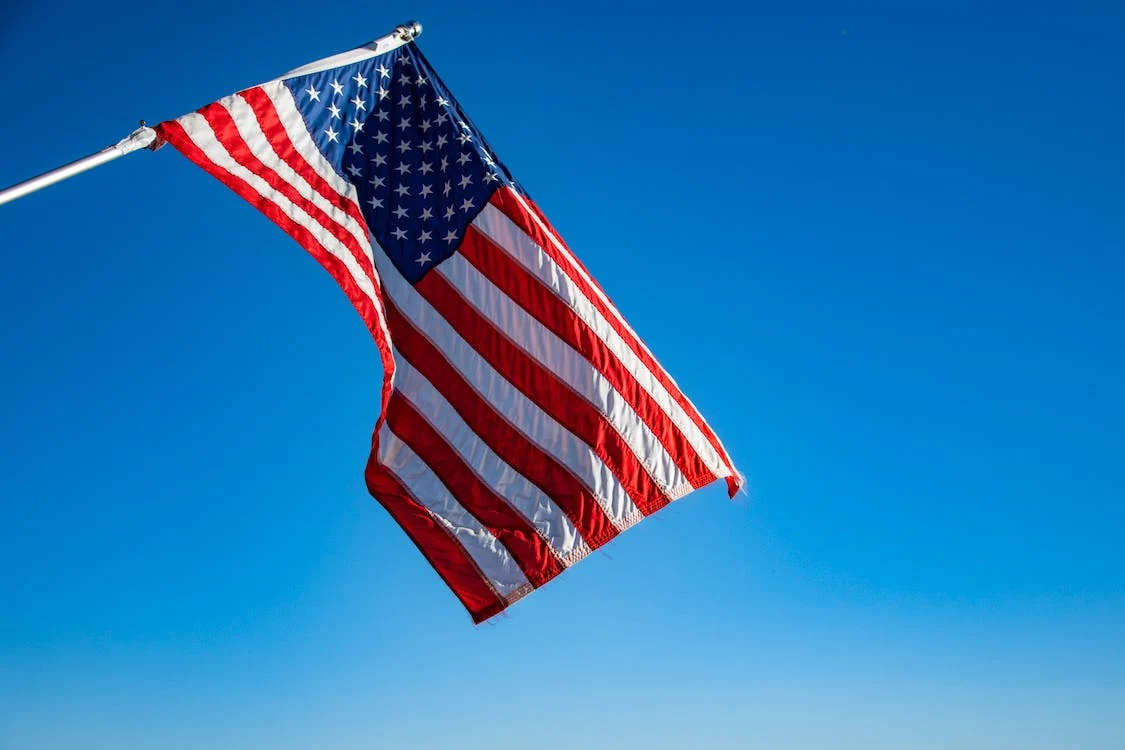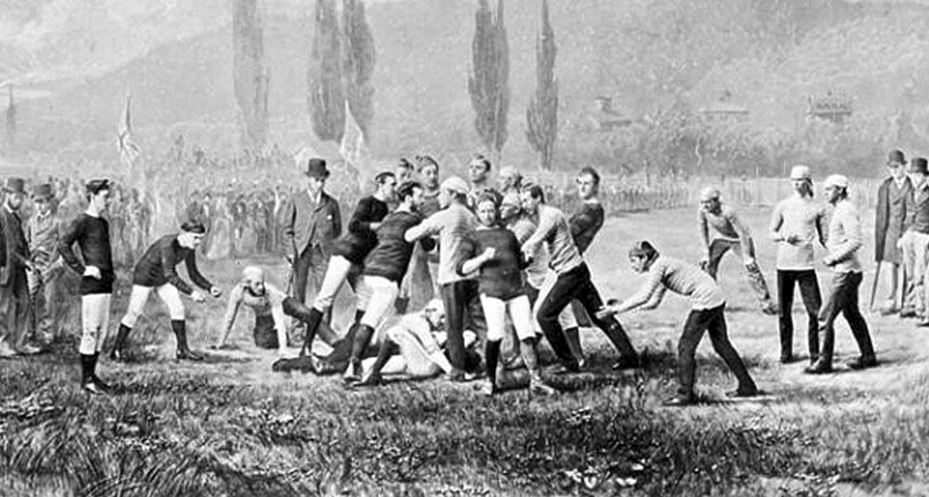Introduction
Rugby has taken the world by storm since its inception; it has successfully made its way out of the British borders toward the heart of its avid fans in every part of the world, including the United States. The United States Rugby Football Union (USA Rugby) is the sport’s highest governing organization in the U.S. USA Rugby is responsible for planning and monitoring the growth of Rugby across the country, including national teams, club competitions, and youth programs. The United States of America national rugby team is affiliated with Rugby Americas North, one of World Rugby’s six regional regulatory bodies. The Eagles are the official men’s national rugby union team representing the country in international rugby competitions. This article will explore how Rugby become an official sport in the U.S.
The Beginning of Rugby in the U.S.
Rugby is an unstructured style of football that gained popularity in the United States during the middle of the nineteenth century. Rugby was brought to the United States in the 1870s, mainly by immigrants from Great Britain and Canada. As early as 1872, rugby union was being played by rugby clubs in the San Francisco Bay Area, most of whose members were British expats. In 1874, Harvard University and McGill University played in the first American rugby match—interest in the game spread across U.S. universities. The Intercollegiate Football Association was founded in 1876 by Yale, Harvard, Princeton, and Columbia and primarily employed the rugby code. Oscar Shafter Howard of Harvard University first instituted these regulations at Berkeley in 1886.
However, as the number of injuries from American football games increased, President Theodore Roosevelt vowed to abolish the sport due to public outcry over its perceived brutality. Despite this negative feedback, rugby union quickly gained popularity in California beginning in 1906, including Stanford University, the University of California at Berkeley, and several others. However, Rugby’s popularity did not last, and the sport was all but extinct by the time World War I broke out.
The sport slowly regained popularity in America when a group of students from California extended an invitation to match in New Zealand. On November 16, 1912, the United States national team met Australia in Berkeley, California, in its first international match, which the U.S. team won. A year later, on November 15, 1913, the United States played host to New Zealand at the same stadium. Still, the visitors blew the Americans out 51-3 in front of a crowd of 10,000. After WWI, the United States competed in the Inter-Allied Games, winning their opening match against Romania but losing their second match to France.
Before the 1920 Olympics, rugby union had not played competitively across most of the United States for over a decade. The United States Olympic Committee concluded that “California is the only state playing Rugby in the U.S., the Committee will give sanction but no financial aid” because of this fact. Harry Maloney, coach at Stanford and president of the California rugby union, assembled a team with many players from his home state. The Amateur Athletic Union’s Olympic Games Committee covered the cost of the team’s flight from California to Antwerp for the Olympics. France and the United States remained in the competition, and the United States stunned France, 8-0, to win the gold medal.
During the 1924 Paris Games, France dared the United States to defend their Olympic gold. The United States Olympic Committee once again provided approval but no funding. Once again, Northern California played a significant role in the composition of the U.S. team. The rugby match was at the Colombes Stadium at the French Olympic Committee’s (FOC) request. An estimated 30,000–50,000 people showed up to Colombes Stadium on May 18 to witness the Rugby final and the presentation of the first medal of the 1924 Olympics. The United States got off to a strong start, headed by captain Colby “Babe” Slater, and took a 3-0 lead into halftime. The U.S. scored four tries in the second half to defeat the French 17-3. The Americans’ heavy tackling, adapted from American football, scared off and exhausted the French. However, the International Olympic Committee decided to drop rugby union from the Olympics shortly after the 1924 games.
The sport’s development in the United States faltered since then, and the game stagnated without the Olympic incentive. Later, the sport saw a revival between the 1960s and the 1970s. This necessitated the establishment of a national governing organization to serve as the United States’ official rugby representative abroad. In 1975, the Pacific Coast, West, Midwest, and East territorial groups came together to become the United States of America Rugby Football Union, better known today as USA Rugby.
The Development of the USA Rugby
USA Rugby, or the United States of America Rugby Football Union, Ltd., is the organization responsible for regulating the sport of rugby union in the United States. Its mission is to uphold “high levels of quality in all aspects of Rugby while advocating the sport across the country and increasing the number of Americans who play Rugby at the international level. The United States of America Rugby Football Union (USA Rugby) was established in 1975, and in 1976 it hosted the first-ever international match with the United States national rugby squad. The collegiate rugby sector is currently the largest within USA Rugby, with approximately 32,000 participants. It oversees the senior men’s and women’s national teams, the men’s and women’s sevens teams, and the under-20 national teams. The organization also supports college rugby for both sexes. However, the NCAA just recognized women’s Rugby as a new varsity sport in 2010.
As a Founding Sports Partner of the Sports Museum of America, USA Rugby joins over 50 other single-sport Halls of Fame, national governing bodies, museums, and other organizations from around North America in honoring the rich heritage, glorious traditions, and cultural significance of sports in the United States. As a way of showing appreciation for their help opening the country’s first all-sports museum on May 7, 2008, USA Rugby is featured in the Hall of Halls Gallery of the Sports Museum of America in New York City.
The USA Rugby Eagles
The United States of America is represented in international rugby union tournaments by the USA Rugby Eagles. Both men’s and women’s national teams compete under the USA Rugby Eagles banner. The Men’s Eagle represents the senior men’s national team. In contrast, the Women’s Eagles represent the senior women’s national team. The Eagles compete in international fixtures, exhibition matches, and tournaments like the Americas Rugby Championship, which features teams from North and South America.
After rising to prominence in the 1970s, the United States national team continued to increase the number of games they played each year during the 1980s. In 1987, the United States competed in the inaugural Rugby World Cup, which was held in New Zealand and Australia. The United States, Australia, England, and Japan comprised Pool 1. At Ballymore Stadium in Brisbane, the United States defeated Japan 21-18, with fullback Ray Nelson scoring 13 points. The next two games were losses for the United States: 47-12 against the Wallabies and 34-6 to England. As the pool’s third-place finisher, the United States was eliminated from playoff consideration. The Eagles’ 1987 tour concluded with a loss to Wales (46-0) in Cardiff in November. The Eagles’ 1988 European tour was a mixed bag, with wins over Romania and losses to the Soviet Union.
The United States qualified for the 1991 Rugby World Cup in the United Kingdom through a qualifying competition and was placed in a tough group alongside defending champions New Zealand, hosts England, and Italy. Overall, the United States ranked fourth. The U.S. qualified for the 1995 Rugby World Cup by beating Bermuda 60-3 in the first round of the Americas qualification event. The team aimed to play in the 1999 Rugby World Cup in Wales. Therefore, preparations got underway. The United States lost to Argentina and Canada in round four of the Americas qualification tournament in Buenos Aires. Still, they qualified for the 1999 tournament by beating Uruguay in their final game. At the 1999 Pacific Rim Championship, the United States team won for the first time, beating Fiji and Tonga. However, in a tune-up game before the 1999 Rugby World Cup, the Eagles lost to England, the team’s worst loss in history.
During the 1999 Rugby World Cup, the Eagles were placed in Pool E, along with Australia, Ireland, and Romania. Although they lost against Ireland and Romania, the Eagles ended up in fourth place in their group. They gained the distinction of being the only team to score a try against Australia.
In recent years, the performance and profile of the USA Rugby Eagles have increased dramatically. Despite their lack of Rugby World Cup success, the Men’s Eagles have won the Americas Rugby Championship in back-to-back years in 2017 and 2018. The Women’s Eagles have also improved, having competed in and done well at many Rugby World Cup tournaments and several regional tournaments. USA Rugby has been trying to strengthen Rugby on a national scale. They’ve set up special facilities and programs to help discover and develop promising young athletes. There are also community-based initiatives, collegiate rugby programs, and youth development programs, all working to increase the popularity of Rugby in the United States.
The Future of Rugby in the U.S.
Rugby can see a bright future in the United States sports arena; as more and more people learn about the sport, more people are eager to participate and cheer for it. Television broadcasts, online streaming services, and social media have all helped spread the word about Rugby in the U.S. and increased the sport’s popularity there. The significant growth in the number of interested young people playing Rugby in the United States is also a good sign that the sport is on solid ground. Currently, numerous communities and educational institutions provide rugby training and programs for young athletes.
Moreover, Rugby’s popularity on college campuses around the United States continues to grow. Rugby has been part of most collegiate sports competitions, which makes it one of the most popular sports among student-athletes. Additionally, major League Rugby (MLR) and other professional rugby leagues in the United States are a huge step forward for the sport. MLR allows domestic players to participate at a professional level while also recruiting top players worldwide. The rise of professional Rugby provides a more organized and long-term career path for players while also increasing the sport’s visibility in the country.
While the United States national rugby team has yet to achieve significant success on the international stage, it has benefited from playing regularly against top-tier nations. The sport can advance in the country if the national team keeps competing at the Rugby World Cup and is more competitive against other strong rugby nations. Across the United States, there has been a rise in both establishing and investing in rugby facilities. This plan includes high-performance arenas, training centers, and stadiums. Building improved facilities helps the sport expand, giving athletes more options for practice and competition. The sport’s involvement in the Olympics has boosted its profile in the United States.


